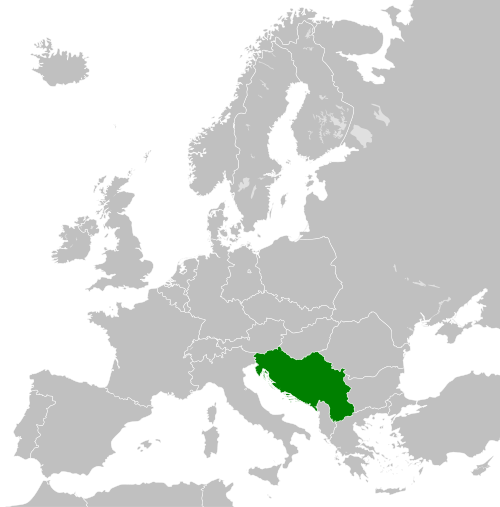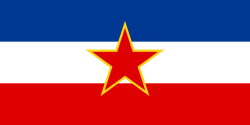Socialist Federal Republic of Yugoslavia
| Federal People's Republic of Yugoslavia (1946–1963) Federativna Narodna Republika Jugoslavija Socialist Federal Republic of Yugoslavia (1963–1992) Socijalistička Federativna Republika Jugoslavija | |
|---|---|
| 1945–1992 | |
 | |
| Capital and largest city |
Belgrade |
| Mode of production | Capitalism |
| Government | Federal bourgeois republic under a Titoist military dictatorship |
The Socialist Federal Republic of Yugoslavia (SFRY),[a] known from 1945 to 1963 as the Federal People's Republic of Yugoslavia (FPRY),[b] commonly known as Titoist Yugoslavia, was a revisionist state in the Balkan region of Europe which existed from 1945 until 1992 when it was succeeded by the Federal Republic of Yugoslavia. Throughout its existence, it was a nominally federal state comprised of six constituent republics: Bosnia and Herzegovina, Croatia, Macedonia, Montenegro, Serbia, and Slovenia.
From its inception in 1945 until 1980, the state was under the leadership of Josip Broz Tito, from whom the revisionist doctrine of Titoism is named. After regaining independence in a partisan movement during the Second World War, the ruling clique of Tito and others would go on to betray the Soviet Union and people's democracies of Eastern Europe and align with Western imperialist powers.[1] SFR Yugoslavia would never develop socialism, instead restoring and entrenching capitalism under the deviation of market socialism.[2]
After the death of Tito, ethnic and national tensions which the revisionist government had for decades incited begun to destabilize the country, resulting in a series of wars which led to the breakup of Yugoslavia in 1992.[3]
Further reading
See also
References
- ↑ Antonin Gregor (October 14, 1949). Enslavement of Yugoslavia by Anglo-American Capital. For a Lasting Peace, for a People’s Democracy! No. 22 (49).
- ↑ Is Yugoslavia a Socialist Country? (September 26, 1963). Editorial Departments of Renmin Ribao (People's Daily) and Hongqi (Red Flag).
- ↑ Robert Hayden (March 19, 2010). Serbian and Croatian Nationalism and the Wars In Yugoslavia. culturalsurvival.org.

